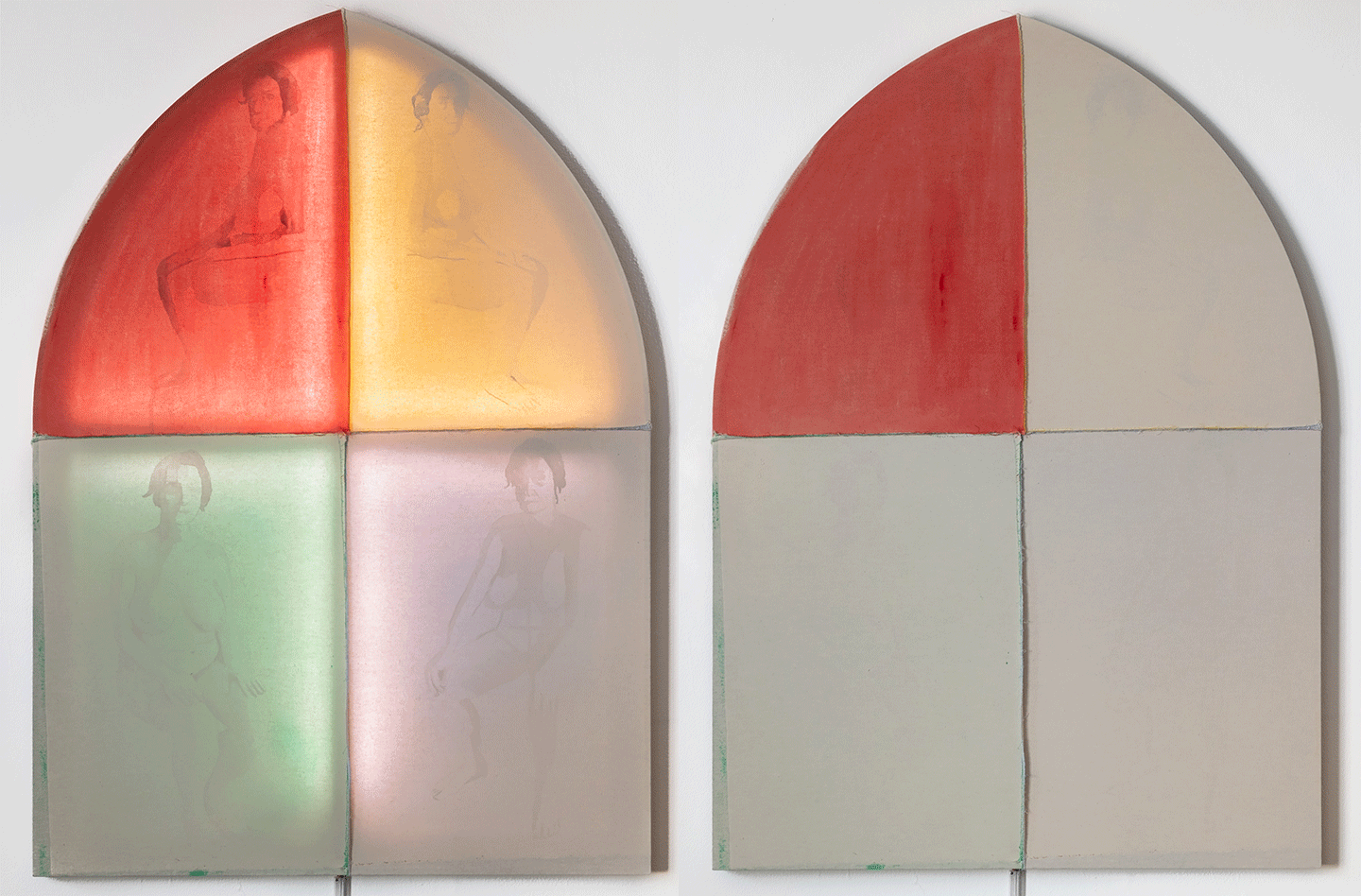
I speak of the extremity of night
I speak of the extrimity of darkness
and of the extremity of night.
If you come to my house, O kind one, bring for me a lamp
and a window through which to look upon
the happy swarming street.
-Forugh Farrokhzad, The Gift
The idea of the body as home, home as shelter, and the window as a connection to the public sphere are central concepts of the project I am calling “The Window.” Through these pieces, I explore themes established in my earlier work regarding issues of censorship and the body, particularly women’s bodies. This work responds to my own personal experiences, whether in the government censorship of my native Iran or the more subtle, everyday forms of silencing and erasure that I have encountered in the US. In these pieces, the wooden frames represent arched windows while the canvas is a curtain—more specifically, a purdah. In Farsi, the word purdah has several meanings beyond a window curtain. As a verb, one can say "lifting the purdah'' to mean revealing the truth. As a noun, it can also mean a veil for women’s body and hair, a tableau, a tone in music, the fret of a guitar, a key in the piano, and an act in a theatrical play. The world's most embellished metaphor as a noun is its meaning of virginity or the state of being immaculate, and more literally, it also means a woman's hymen.
The arched shape of these frames makes reference to the painting style of the Qajar era (late 18th to early 20th century) in Iran when artists began to embrace realism in their depiction of human subjects, often in life-size works that incorporated the arched shape typical of Iranian architecture at the time. Through this evocation of both the window and the history of the representation of human subjects in Iranian art, these pieces speak to issues of visibility/invisibility and the human body in their very frames.
Hidden behind the primary colors of these works, the paintings continue on the back of the canvas, where nude figures are depicted. These figures do not feel shame in their exposure to the world: they sit comfortably, unafraid of the outside gaze. They are not visible by daylight; however, as the sun sets or as lights are triggered by motion sensors, the painting will come to life. These pieces incorporate light that emanates from within the painting, as a kind of metaphorical opening of the curtains, using LED lights built into the back of the frame that will slowly, gradually brighten. The light will reveal the figures behind the canvas much like one can peer into a home when its lights go on at night. When the sun rises in the morning, the light will slowly fade away, hiding the nude figures and returning privacy to the “residents” of the painting. Window #2 was initiated with the idea of the isolation of mothers. I used images of my body and my son’s to refer to motherhood. When I was breastfeeding my son in public, I imagined how seductive would a mother’s feeding be. For me, my breasts weren't a private part of my body anymore, they were like a restaurant to serve food for my child. Hiding myself and my child during breastfeeding gave me a feeling of censoring and isolating motherhood. As mother and child in art history so often reference Madonna and Jesus, I made the frame and light setup behind the canvas to show the cross on her breast.
PAINTINGS









































